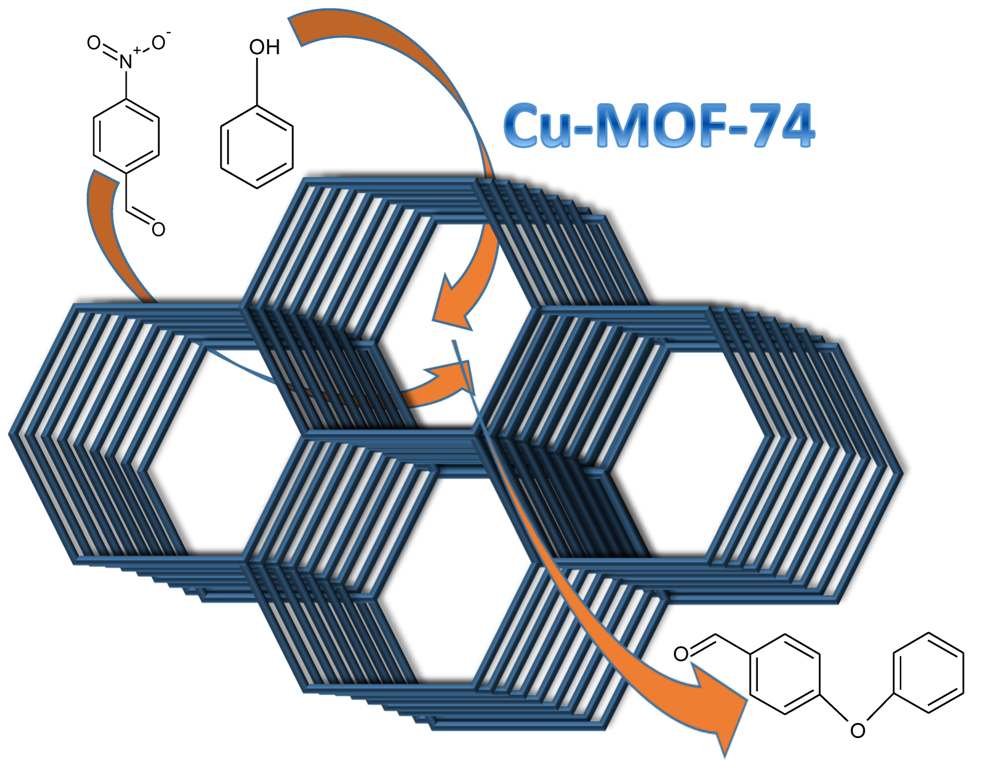The activity and cyclability of Cu-MOF-74 as catalyst was studied for the ligand-free C-O cross-coupling reaction of 4-nitrobenzaldehyde (NB) with phenol (Ph) to form 4-formyldiphenyl ether (FDE). Cu-MOF-74 is characterized by unsaturated copper sites in a highly porous metal-organic framework. The influence of solvent, reaction temperature, NB/Ph ratio, catalyst concentration and basic agent (type and concentration) were evaluated. High conversions were achieved at 120°C, 5 mol% of catalyst, NB/Ph ratio of 1:2, DMF as solvent and 1 equivalent of K2CO3 base. The activity of Cu-MOF-74 material was higher than other ligand-free copper catalytic systems tested in this study. This catalyst was easily separated and reused in five successive runs, achieving a remarkable performance without significant porous framework degradation. The leaching of copper species in the reaction medium was negligible. The O-arylation between NB and Ph took place only in the presence of Cu-MOF-74 material, being negligible without the solid catalyst.

